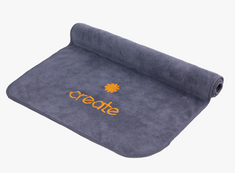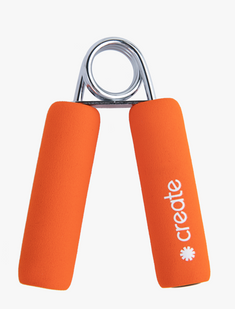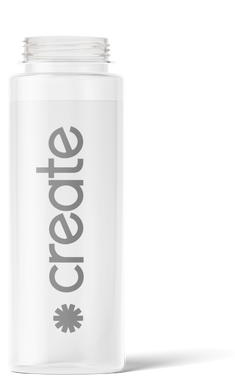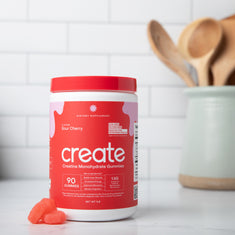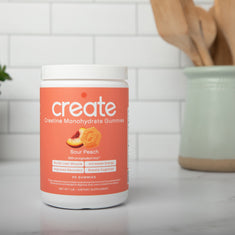Unraveling The Mystery: Can Creatine Cause Nose Bleeds?
Widely used supplements like creatine are known to improve sports performance by raising ATP production. Even though side effects are generally thought to be safe, it's important to know what they could be. The issue of creatine supplementation and nose bleeding is controversial because there is insufficient data to draw firm conclusions. The purpose of this investigation is to determine whether or not these claims—in relation to creatine use—are true.
What Are The Common Causes Of Nosebleeds?
Dry air, nose picking, and irritation are common causes of nosebleeds, which frequently result in the breaking of tiny blood vessels in the nasal passages. Additional factors may include trauma or underlying medical conditions.
Dry Air
Dry air exposure, which is typical in the winter or in dry climates, can desiccate nasal passages, increasing the risk of blood vessel rupture and nosebleeds. Maintaining indoor humidity between 30 and 50%, using a humidifier, drinking plenty of water, and using saline nasal sprays to keep nasal tissues moist will all help to lessen the likelihood of nosebleeds brought on by dry air.
Nose Picking
Regular or aggressive nose-picking increases the risk of physical harm to vulnerable blood vessels, which can result in nosebleeds. It takes gentle handling to prevent such damage. Saline nasal sprays, short nails, and distraction techniques are some alternatives to break the habit and lessen the chance of nosebleeds from this common behavior.
Trauma Or Injury
Nasal bleeding may result from facial injuries or direct blows to the nose that damage blood vessels. Nasal bone fractures or injuries may alter the integrity of blood vessels, raising the possibility of nosebleeds. Reduce the possibility of nosebleeds from injuries by wearing protective gear, such as face shields or helmets, when engaging in activities that put your face at risk for trauma.
Nasal Irritation
Nasal passages can become inflamed when exposed to irritants like smoke or strong odors, which increases the risk of bleeding blood vessels. Reduce irritation by staying away from smoke-filled areas, using air purifiers, and donning masks when required. By keeping the nasal mucosa healthy, nosebleeds brought on by environmental irritants are less common.
Infections
Because respiratory infections weaken the blood vessel walls in the nasal passages, inflammation increases the likelihood of nosebleeds. Use saline nasal sprays to stay hydrated, maintain good hygiene, and reduce your risk of getting sick during the cold and flu seasons. By taking these precautions, nosebleeds brought on by infections can be avoided.
Allergies
Allergies increase the risk of nosebleeds by constricting the nasal passages and making blood vessels more sensitive. Vascular rupture risk rises as a result of allergic inflammation. It is possible to reduce nosebleeds brought on by the increased vascular fragility associated with allergic reactions by controlling allergies with antihistamines and nasal corticosteroids and avoiding triggers.
Blood-Thinning Medications
Anticoagulants and other blood-thinning drugs interfere with the clotting process, making nosebleeds more likely. A decreased capacity to clot increases the danger. People taking these drugs should keep an eye out for persistent or frequent nosebleeds and seek medical assistance if necessary. To balance the advantages and disadvantages of blood-thinning drugs, dosage management and routine checkups with a physician are essential.
Exploring The Relationship: Creatine And Nose Bleeds
Look into the possibility of a connection or causal relationship between nosebleeds and creatine supplementation.
Existing Research
There is insufficient data to draw firm conclusions about the relationship between nosebleeds and creatine. In the absence of controlled trials, studies frequently rely on observational or self-reporting techniques. To completely understand the connection between nosebleeds and creatine supplementation, more research is necessary.
Expert Opinions
Dietitians, exercise specialists, and medical professionals can all offer different viewpoints on creatine and nosebleeds. Some experts point out that there isn't enough proof to draw a direct connection, while others emphasize possible secondary causes. The lack of agreement emphasizes the necessity of continuing research and scholarly discussion within the industry.
Potential Mechanisms
The physiological mechanisms pertaining to nosebleeds and creatine supplementation are still up for debate. Creatine has no direct effect on nasal health; rather, it helps muscles produce energy. Theories within science that consider potential correlations focus on blood flow, vascular alterations, or hydration levels; however, agreement on particular mechanisms is lacking, so more research is necessary.
Dosage And Frequency Considerations
There is not enough data to establish a connection between nosebleeds and particular creatine dosages or frequencies. Following suggested procedures is essential to reducing risks. Users should speak with healthcare professionals for tailored advice to make sure the dosage of creatine suits their needs, putting safety first and keeping an eye out for any negative effects.
Comparisons With Placebo Or Control Groups
The lack of control groups or placebos in the few studies available on creatine and nosebleeds makes it difficult to establish a strong cause-and-effect relationship. For accurate results, comparisons between creatine users and non-users are essential. To improve research validity and determine whether observed associations are due to creatine supplementation or other confounding factors, controlled studies must be included.
What Should You Do If Your Nose Starts Bleeding?
When dealing with a nosebleed, the first steps to take are to tilt the head forward, pinch the nostrils, and apply cold compresses. If the bleeding doesn't stop, you should get medical help. let's investigate them thoroughly.
Stay Calm
Maintaining composure in the face of bleeding is essential for reducing tension, facilitating sane decision-making, and averting panic. Maintaining composure makes it easier to administer first aid and less likely that the situation will get worse.
Sit Upright And Lean Forward
Sitting up straight and bending slightly forward during a nosebleed helps stop blood from running down the throat, which lowers the chance of experiencing nausea and vomiting from ingesting blood.
Pinch Your Nose
Using your thumb and forefinger, pinch the soft area of the nose directly below the bony bridge. During a nosebleed, apply firm pressure to minimize pain and help compress blood vessels while controlling the bleeding without using excessive force.
Breathe Through Your Mouth
When you have a nosebleed, breathe through your mouth to prevent breathing in blood and to maintain the integrity of the blood clot that is forming in your nasal passages. This will help you heal more quickly and comfortably.
Maintain Pressure
When a nosebleed occurs, pinch the nose and hold it there for five to ten minutes. Apply pressure for a further five to ten minutes, monitoring the bleeding with a clock if it continues. Maintaining constant pressure facilitates the formation of clots and effectively controls bleeding.
Apply Ice (Optional)
When a nosebleed occurs, you may choose to place a cold pack or piece of ice wrapped in a thin cloth over the nose's bridge. This may narrow blood vessels and lessen bleeding. Stress that treating nosebleeds with this approach is optional and advise against direct contact to avoid frostbite.
Ready To Transform? Choose Create For Premium Creatine Products!
Choose the high-end creatine products from Create. Our dedication to quality is reflected in the meticulous formulation of our supplements, which guarantee excellent outcomes. With our premium offerings, you can transform your fitness journey with confidence and receive the excellence you deserve. To experience the best creatine and reach your maximum potential, select Create. This is where your metamorphosis begins!


